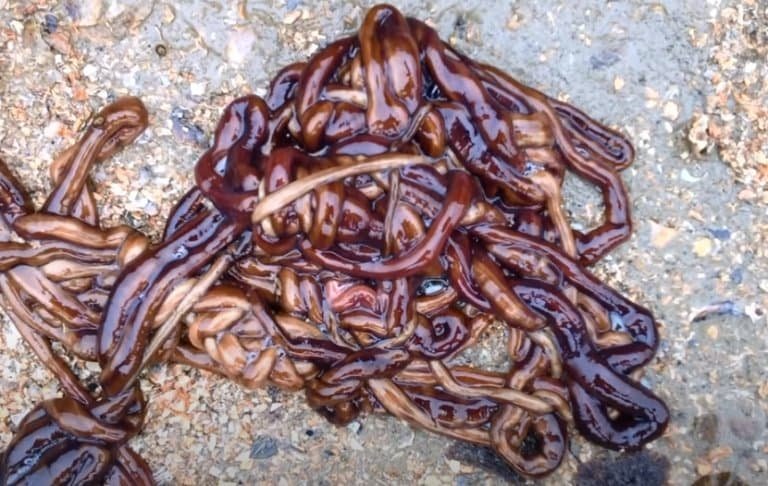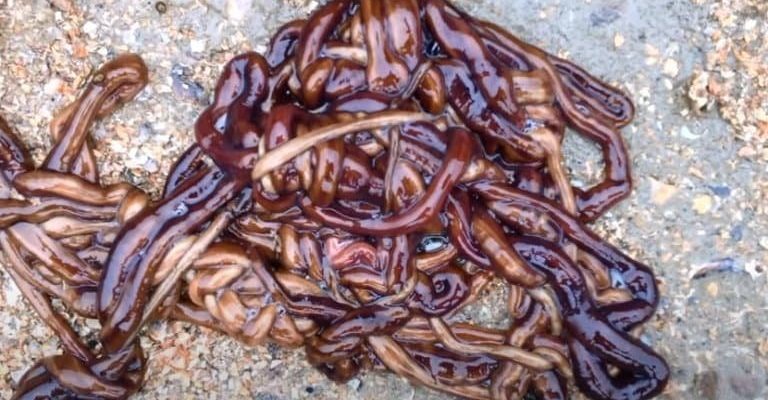
Think of it like spotting a sibling in a crowd. Sure, they both might have the same color hair and wear similar clothes, but there are subtle traits that give them away. The same goes for bootlace worms and flatworms. Let’s dig deeper and uncover what sets these two apart, so you’ll know exactly which worm you’re dealing with on your next outdoor adventure.
What Are Bootlace Worms?
Bootlace worms belong to a group called *Lineus*, and they can be found in various environments, particularly in marine and brackish waters. They’re known for their incredible length, sometimes reaching up to 30 meters (about 98 feet)! If that sounds intimidating, don’t worry—they’re generally harmless and don’t pose a threat to humans.
One of the most captivating features of bootlace worms is their appearance. They tend to be long and slender, with a somewhat transparent body. When they move, they can look like a flowing ribbon or a muted snake sliding through the water. It’s this unique movement that makes them stand out.
You might be wondering why they’re called bootlace worms. The name comes from their long, thin shape, which resembles the laces of your shoes—hence the “bootlace” moniker. They’re fascinating creatures with a lot of mysteries still to be unraveled!
What Are Flatworms?
Flatworms, on the other hand, span several different species, mainly belonging to the *Platyhelminthes* phylum. Unlike bootlace worms, flatworms are typically found in freshwater, marine, and even terrestrial environments. They’re known for their flattened bodies, which can vary in color and pattern, making them quite a visual treat!
Most flatworms don’t grow nearly as long as bootlace worms. Instead, they range from just a few millimeters up to around 20 centimeters (about 8 inches). Their bodies have a flat, leaf-like shape, giving them a distinctive look that’s quite different from their elongated counterparts.
Flatworms often come in vibrant hues of beige, yellow, brown, or even orange. This striking coloring is part of what makes them so interesting. Some flatworms even possess the ability to regenerate lost body parts, making them incredible survivors in their environments.
How To Identify Bootlace Worms
To spot a bootlace worm, it’s essential to pay attention to its body shape and movement. They’re long, thin, and flexible—almost like a piece of spaghetti in the water. They can also appear to be somewhat translucent, which adds to their mystique. When they move, you’ll notice a graceful, undulating motion that sets them apart from other worms.
Another identifying feature is their habitat. Bootlace worms thrive in marine environments, so if you’re near the ocean or a brackish area, that’s your best bet for finding one. If you catch a glimpse of something long and shiny, it’s likely a bootlace worm!
Don’t forget to observe their reaction if you happen to catch one! When disturbed, bootlace worms can sometimes retract or break apart, which is another fascinating aspect of their biology. This ability helps them escape predators in their natural habitat.
How To Identify Flatworms
Identifying flatworms is all about looking for their unique characteristics. As mentioned earlier, flatworms have a distinctly flat body that often resembles a leaf or ribbon. Unlike bootlace worms, they don’t have that elongated shape. Instead, you’ll notice them as they spread out across surfaces or swim with a more fluttering motion.
Flatworms also come in a variety of colors and patterns. Some might have beautiful stripes or spots, making them more visually appealing. You’ll often find them clinging to rocks or plants, especially in freshwater environments.
Another key feature to look for is their eyes. Many flatworms have simple eye spots that can detect light and dark, giving them a more distinct look compared to the more uniform appearance of bootlace worms. If you see a worm with these identifiable traits, chances are it’s a flatworm!
Behavioral Differences
Bootlace worms and flatworms also behave differently. Bootlace worms are known for their slow, gliding movement, which helps them navigate through their aquatic environments. They often use a method called “inchworming,” where they move in a series of waves, creating a graceful appearance.
In contrast, flatworms tend to be more active and can dart away quickly if threatened. Their flattened bodies help them navigate through tight spaces, but they can also quickly swim away when needed. Some flatworm species even exhibit predatory behaviors, hunting smaller prey for food.
Additionally, bootlace worms are usually solitary creatures, while flatworms may be found in groups or colonies. This social behavior can often help scientists study their interactions and better understand their ecosystems.
Where To Find Bootlace Worms vs. Flatworms
Knowing where to find bootlace worms versus flatworms can greatly enhance your exploration adventures. As previously mentioned, bootlace worms are primarily found in marine and brackish waters. Look for them in sandy or muddy substrates where they burrow or glide along the surfaces. They thrive in environments like estuaries or coastal regions.
Flatworms, on the other hand, can be found in a wider range of habitats. They occupy freshwater environments like ponds, lakes, or streams, but they can also be seen in marine settings. In addition to being found on rocks and vegetation, you might spot them gliding along the bottom or floating in the water.
Both bootlace worms and flatworms play essential roles in their ecosystems. They’re both part of the food web, serving as prey for various animals while also helping to recycle nutrients in their habitats.
Why It Matters to Differentiate Them
Understanding the differences between bootlace worms and flatworms isn’t just for your own curiosity. It plays a vital role in ecological studies, conservation efforts, and educational initiatives. Knowing which species you’re observing can provide insights into the health of marine and freshwater ecosystems.
Additionally, many species of flatworms are beneficial as they help control pests in aquatic environments. Bootlace worms, while less commonly discussed, can also contribute to nutrient cycling. By knowing the difference, you can appreciate the diversity of life and the unique roles these creatures play in their respective habitats.
So, the next time you stumble upon a slippery worm while exploring, take a moment to observe its features. You’ll be surprised at how much you can learn by simply recognizing the differences between bootlace worms and flatworms.
In conclusion, it’s all about paying attention to details. By focusing on their shapes, habitats, and behaviors, you can confidently identify these fascinating creatures. Happy exploring!

